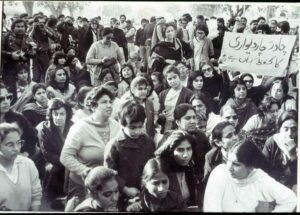Not All Feminists Think Alike: How Pakistani Society has Fundamentally Misunderstood Feminism
Much like LahoreŌĆÖs infamous Butt Karahi, where several claim to be the real deal but no one can know for sure, the discourse around feminism in Pakistan often feels incomplete without someone crowning their personal opinion as ŌĆ£realŌĆØ feminism. Meanwhile, ŌĆ£feministŌĆØ is a derogatory term for some, used to conveniently dismiss a person with a pro-women stance as someone too outrageous or irrelevant to listen to. Where gender discourse is prevalent like it is in Pakistan, this highly subjective understanding of the concept leads to hollow, pointless conversation. In the words of William H. Whyte: ŌĆ£the greatest enemy of communication, we find, is the illusion of itŌĆØ.
How We Misuse The Words ŌĆ£FeministŌĆØ and ŌĆ£FeminismŌĆØ
Attempting to define something without reference to any credible source can be fatal to meaningful and essential conversations. It can often function as a thought-terminating clich├®, a concept defined and popularized by Robert Jay Lifton. A thought-terminating clich├® essentially blocks critical thinking and lulls the discomfort we feel when holding contradictory beliefs, also known as cognitive dissonance. For instance, cognitive dissonance may occur when a person believes in gender equality but feels discomfort when deeply ingrained gender roles and norms are challenged. A simple redefinition can curb cognitive dissonace, endorsing female empowerment as long as it does not conflict with a particular social norm. These curated definitions are often very narrow, helping people avoid partaking in more controversial conversations, such as economic exploitation of women in families. It also helps invalidate feminist takes by labelling them as non-feminist, instead of actively engaging with them.
On the other side of the coin, the word ŌĆ£feministŌĆØ is treated as insulting, a misuse people are more aware of. Many reduce feminists to man-haters wanting to destroy the family, culture, and faith. Interestingly, this is another way of claiming to know what feminism truly is. People meet accusations, such as man-hating with attempts to defend feminism, often through explanations of real feminism. In essence, the parties involved are talking about different things with the same name, yet they persist in arguing about it.┬Ā
Understanding Feminism as a Non-Monolith
Feminism is not a monolith. Expecting everyone perceive it exactly the same way would mean denying people’s diverse experiences and beliefs, essential for propelling conversations forward. What we lack is a nuanced understanding of feminism and its different branches. This crucial information would give us the vocabulary to communicate meaningfully, and avoid getting lost in circular debates of what feminism really is.┬Ā
Feminists can belong to several different schools of thought, but the dominant branches are liberal, radical, Marxist and difference feminism. The schools generally differ in what they primarily seek to achieve, such as equality of opportunity or a restructuring of society to be more equitable. Often, feminists critique feminists. Thus, if your feminist opinion conflicts with that of another person, it is important to remember that dissent can occur within feminist circles. Instead of pointlessly arguing which person defines feminism correctly, discuss the merit and substance of the opinions themselves.┬Ā
It is also helpful to have an idea which schools of thought resonate with you.. You will have a richer understanding of your own opinions.. Even if you do not agree with any feminist branch on any matter, unlikely as that is, it is still important to understand the nuanced differences between the branches of feminism. This will prevent you from mistakenly attacking feminists instead of engaging with what they are saying. In all likelihood, you will agree with different branches on different issues, leading to nuanced and informed opinions.┬Ā
What Type of A Feminist Are You?
If you believe in gradual change instead of revolutionary reform, through legal and policy reform, then you may identify with liberal feminism. Often termed as ŌĆ£mainstreamŌĆØ feminism, it concentrates on political and legal reform as the primary means of achieving gender equality within a state. Think equal pay laws, maternity leave laws, childcare policies or laws against workplace harassment. The idea is to remove barriers to equality, be it discriminatory laws or policies. Liberal feminism is the oldest school of thought in feminism, stemming from the First Wave of the Feminist movement. It does not call for restructuring society, but attaining equality within existing social structures.
 You might however lean more towards radical feminism if you believe that change must be brought at a social level, not just through the legal system. The radical feminists wish to dismantle the patriarchy – societal system which favors men – instead of attaining legal equality. Where liberal feminists want to repair tears in the fabric of society, radical feminists want to weave a new fabric altogether. You might have come across the famous radical feminist slogan, ŌĆ£The Personal is PoliticalŌĆØ. This slogan means that issues that affect individual women, such as domestic violence or rape, are actually part of broader society-wide problem caused by power imbalances between men and women. Thus, autonomy is very important to radical feminists.
You might however lean more towards radical feminism if you believe that change must be brought at a social level, not just through the legal system. The radical feminists wish to dismantle the patriarchy – societal system which favors men – instead of attaining legal equality. Where liberal feminists want to repair tears in the fabric of society, radical feminists want to weave a new fabric altogether. You might have come across the famous radical feminist slogan, ŌĆ£The Personal is PoliticalŌĆØ. This slogan means that issues that affect individual women, such as domestic violence or rape, are actually part of broader society-wide problem caused by power imbalances between men and women. Thus, autonomy is very important to radical feminists.
Interestingly, radical and liberal feminism are often at crossroads with each other. A commonly known point of dissent is their stances on sex-work; liberal feminists seeking to legalize it as long as it is consensual while radical feminists believe that the consent is coerced due to the economic state of society. It is a good exercise to look up the stances of different schools of thought in feminism on any controversial issue one comes across instead of attributing one stance to all ŌĆśfeministsŌĆÖ.
Then there is Marxists feminism, which blames capitalism as the root of gender inequality. This branch is very critical of traditional gender roles – husband as breadwinner and wife as caregiver. They believe it to be a form of economic exploitation, where the wife works without pay and is subject to control of the husband, unable to leave the marriage in case she wants to. Women are considered tools of capitalism, reproducing the labor force and helping perpetuate the system.
Difference feminists on the other hand call for embracing what they believe are innately feminine characteristics. This is a conflict with radical feminism, which believes ŌĆśfemininityŌĆÖ has been made by society, does not occur naturally, and women are raised with characteristics which would make them beneficial to men. Difference feminists believe that differences between men and women should be acknowledged. Typically feminine characteristics or behaviors, such as care, should not be considered lesser than men and must be given equal value. For cultural feminists like Mary Daly however, femininity is superior to masculinity.
The variety of opinions that can be considered feminist is clear from a brief glance at the main schools of thought. Even more nuanced opinions can be found among other types, such as intersectional or black feminism.
Given the variety of stances in feminist theory, it is obviously impossible to state what ŌĆ£realŌĆØ feminism is, as treating feminism like a monolith is senseless. There are types of feminism, some resonating with a particular person more than others. Understanding that two opposing people can be feminist at once can save you the hassle of needlessly correcting other people. It can also bring more nuance to criticisms, preventing the enforcement of stereotypes. It is essential that we as a society move past these fruitless debates so we can have beneficial conversation and make progress in terms of women rights. So whether you are a feminist or its strongest critic, it is only right to understand that not all feminists think alike.┬Ā
┬Ā
















